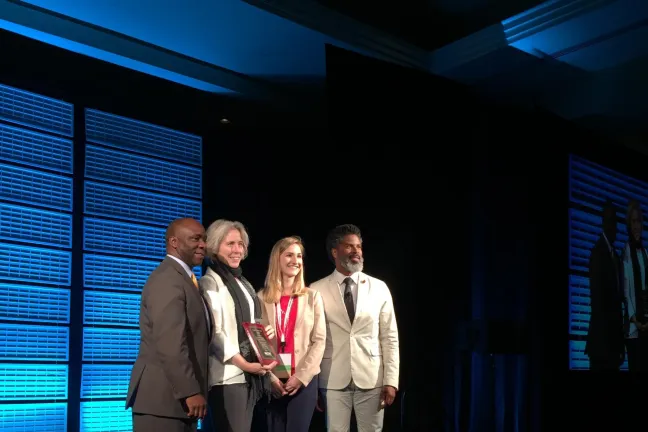Measles is so contagious that you can catch the respiratory disease simply by being in a room where an infected person had been two hours earlier.
So when Oregon posted the highest rates of vaccine exemptions among kindergartners nationally in 2012-2014, Health Department staff were plenty worried. Exemptions for children in daycare were even higher. One in 10 Multnomah County children had an exemption.
Maayan Simckes, an epidemiologist serving a fellowship at the county through the Centers for Disease Control and Prevention and the Council of State and Territorial Epidemiologists, began to analyze just how vulnerable county residents would be to a full-blown measles outbreak. She wanted the county to have a plan in place if the disease started spreading. Bringing government agencies and school districts together to get a fully operational toolkit in short-order required excellent project management.
Last week, the resulting project, “Quad-County Measles Protocol and Toolkit,’’ was named a Model of Practice by the National Association of County and City Health Officials.
The award was presented July 20 in Phoenix to the Multnomah County Health Department, represented by Kelly Howard, a CDC Public Health Associate, and Dr. Amy Sullivan, who heads the Communicable Disease Services division. While the process was led by Maayan and Kelly, dozens of participants worked on the project coordinated by community liaison Melissa McKinney.
“We worked with health departments in Washington, Clackamas and Clark counties, the Oregon Public Health Division, Multnomah Educational Service District and daycares to create this plan and path," said Tricia Tillman, public health director. “I am so proud that regional partners came to the table and created the materials and method needed to respond to a potential threat.’’
Maayan’s idea was to use emergency preparedness planning to get partners focused and identify gaps. Her innovative use of working groups helped spread the workload. While the project was still underway, Maayan left to complete her doctoral studies at the University of Washington and Kelly Howard of the CDC Public Health Associate Program, stepped in.
The result was a toolkit that clarified roles and responsibilities for public health responders and school officials at each step of a measles response. The measles response toolkit components includes a communications plan and materials, and step-by-step guidance in the event students need to be excluded from school. They were tested in a table-top exercise in November then improved. The materials were translated into several languages and shared on Dropbox so that all partners can have real-time access to them.
“Multnomah County has among the highest vaccine exemption rates in the country with unvaccinated children concentrated in a small number of settings,’’ said Sullivan, who supervises the people who developed the plan. “Having clear roles and responsibilities for public health responders and schools -- and clear communications for parents -- will greatly improve the quality and timeliness of our response when the time comes.
As a 2016 NACCHO Model Practice, the protocol will be available to all local health departments as an approach for communicable disease response planning.
And what has the Communicable Disease team done since? They’ve already used the model to develop a protocol and response plan for whooping cough.
“Too often emergency response exercises identify gaps then move on. This project showed a very sustainable way to clear up the gaps by adapting an emergency planning process to a non-emergency situation,'' Sullivan said.

